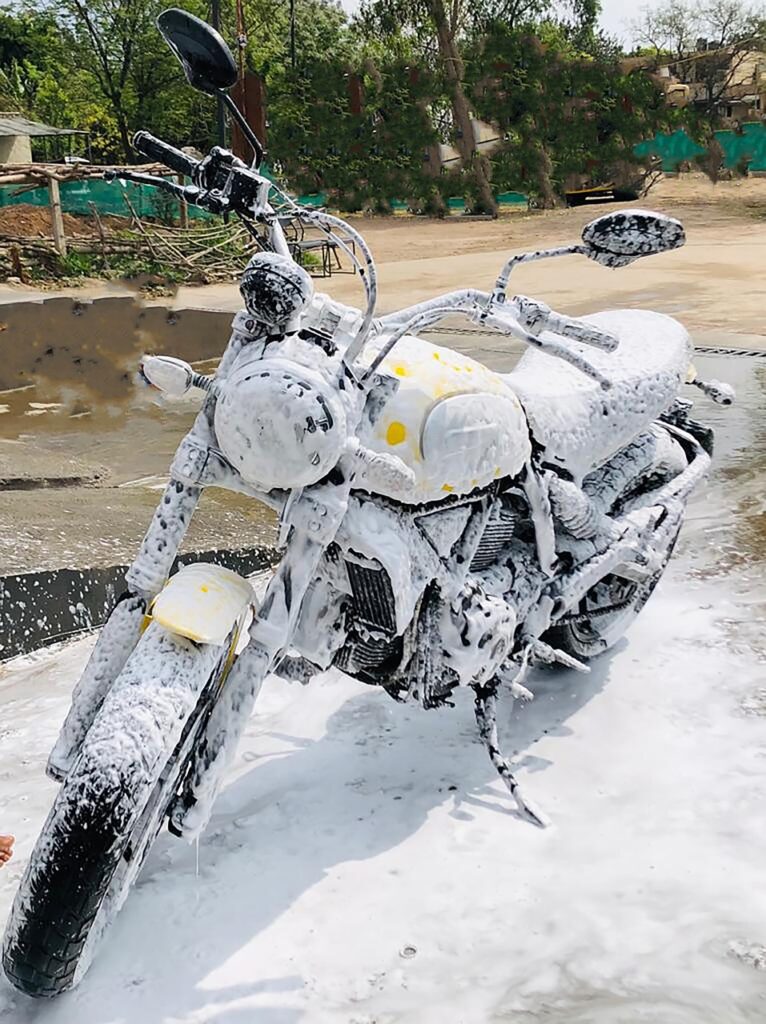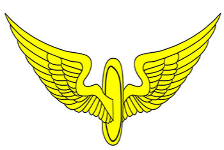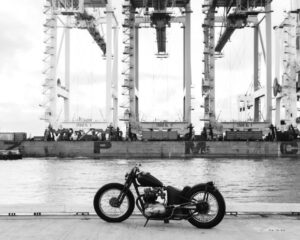5 Common Mistakes to Avoid When Washing Your Motorcycle or Scooter

Maintaining a clean, polished motorcycle not only enhances its aesthetic appeal but also reflects pride of ownership and reverence for the machine. Moreover, dedicating time to inspecting and caring for all the bike’s intricate details fosters a deeper connection between rider and machine. Beyond sentimental value, routine washing and maintenance play a crucial role in preventing wear and tear, ultimately prolonging the motorcycle’s lifespan.
What to Avoid
Picture a perfect day, where the weather couldn’t be better, and you’re all set to give your bike a good scrub. But wait! Before you dive in, ever wonder, “What’s a big no-no when it comes to washing a motorcycle?” Here are five items that should definitely stay off your cleaning checklist, unless you’re aiming for a comedy show instead of a sparkling ride!
1 – Avoid High-Pressure Washers
Even at lower PSI, high-pressure water streams can wreak havoc on the paint and graphics of your motorcycle’s bodywork. Furthermore, excessive water pressure may lead to water seepage, potentially impacting brakes, electrical devices, bearings, seals, and hardware.
According to Ducati, it’s best to steer clear of cleaning your motorcycle with hot or high-pressure water jets. Doing so could result in serious issues such as seizure or faults in forks, wheel hubs, the electric system, headlights (fogging), fork seals, air inlets, or exhaust silencers, ultimately compromising safety compliance. Honda Powersports echoes this sentiment, advising against the use of high-pressure water sprays, as they can damage various parts of your motorcycle. Similarly, Harley Davidson advises caution, suggesting avoidance of high-pressure sprays due to the sensitivity of certain bike components.
2 – Never a Hot Engine or on the Sunny Side of the Street
After returning from a ride, it’s crucial to allow the engine and exhaust system to cool down before breaking out the hose. The abrupt application of cold water to a hot engine can induce thermal shock, potentially damaging critical components like cylinders, cylinder heads, and the engine block. Such damage could result in warping or cracking, necessitating costly repairs.
Additionally, if you clean your motorcycle under direct sunlight, the water and soap on its surface can swiftly dry out, leaving behind unsightly water spots. These spots can prove stubborn to remove, especially if allowed to linger for an extended period. Moreover, the dry soap and evaporated water will demand more water and soap to complete the cleaning process, which can be both wasteful and costly, particularly if you’re paying for water.
3- Avoid Sponges
While using a sponge to clean your motorcycle is a common practice, it’s essential to be aware of potential issues that may arise.
Sponges have a tendency to trap dirt and debris within their pores, creating a risk of scratching the motorcycle’s paint or other surfaces during the cleaning process. Even after rinsing, embedded particles can persist within the sponge and resurface as you continue cleaning, inadvertently causing scratches or swirl marks on your bike’s exterior.
To mitigate this risk, consider using a dedicated motorcycle wash mitt or microfiber cloth instead of a sponge. These alternatives are typically gentler on the surface and less likely to trap debris, providing a safer and more effective cleaning experience for your motorcycle.
4- Harsh Chemicals
Harsh chemicals, abrasive detergents, and solvents pose a significant risk to the integrity of your motorcycle’s paint, chrome, and other vital components. Exposure to such corrosive substances can lead to unsightly damage and deterioration over time. To safeguard your bike’s finish and ensure its longevity, it’s imperative to opt for a gentle yet effective cleaning solution.
For best results use a mild soap or detergent specifically formulated for washing motorcycles or cars. These specialized products are designed to effectively remove dirt, grime, and road debris without compromising the integrity of the surfaces. Using a specialized cleaner ensures your bike receives the care and protection it needs, preserving its appearance and functionality for years to come.
5 – Unplugged Exhaust
You should cover the exhaust pipe while washing your motorcycle. Water entering the exhaust pipe during cleaning can lead to rust and corrosion, potentially causing damage and reducing performance over time.
In A Nutshell
- Skip the power washer and opt for a quality hose with an adjustable nozzle.
- Allow the motorcycle to cool down away from direct sunlight before washing.
- Avoid using sponges, as their pores can trap dirt and potentially scratch the surface.
- Use a mild detergent or a cleaner specifically designed for motorcycles.
- Plug the tailpipe hole to prevent water from entering the exhaust system.
After meticulously cleaning your bike, take it for a leisurely test ride, relishing in the satisfaction that comes from diligently maintaining your vehicle and ensuring it looks its absolute best. By consistently dedicating a few minutes to washing and polishing your beloved ride, you effectively eliminate dirt and grime buildup, while also lavishing it with the tender loving care it rightfully deserves.



